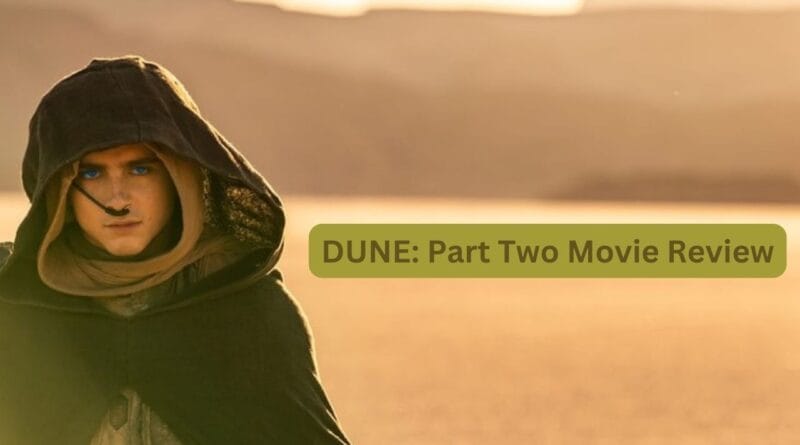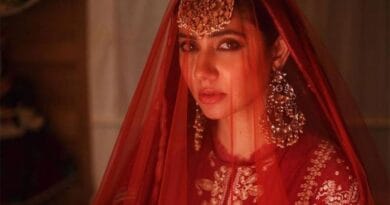Dune: Part Two: Out of the World, Delight to the Eyes, Must Watch
With the ending of Denis Villeneuve’s first Dune movie, this version of Frank Herbert’s epic could be seen as a dark but hopeful beginning to a story about a young man accepting his fate and becoming a liberator. The movie showed Paul Atreides’ moral clarity as a sign that he was on the right path and said that his wisdom was his most valuable tool. You were supposed to see Paul as a complicated but likeable character at the start of his Shakespearean hero’s journey, just like in the book. Part Two of Dune, on the other hand, shows what it takes to become a mythical figure and challenges you to see how deeply sad this story has always been.
This story is captivating and meticulously described. The screenplay by Denis Villeneuve and Jon Spaihts is skillfully crafted, seamlessly weaving together all the subplots. Some dramatic scenes are exceptionally crafted. Yet, the writing falls short in certain scenes. The conversational dialogues are impactful, with some strong one-liners.
Dune: Part Two picks up almost exactly where Dune left off. It goes into more detail about what happened after House Atreides fell, and it follows Paul Atreides (Timothée Chalamet) and his mother Lady Jessica’s (Rebecca Ferguson) ongoing fight for survival on the desert planet Arrakis. Being stuck on Arrakis is like being killed by fierce storms and huge sandworms, even if Jessica’s powerful Bene Gesserit mind-sharpening techniques are used. And Paul has every reason to feel almost unbearably hopeless after seeing his family and friends killed by the Harkonnens.
Before meeting Chani (Zendaya), Paul could only catch glimpses of her in his increasingly prophetic dreams. When he finally meets her in real life, she amazes him with both her strength and the strength of the Fremen, who are the only ones who know how to survive in Arrakis’ desert. Dune: Part Two builds on the complicated mystery of the first movie by showing that Paul is most likely the chosen one who will lead the Fremen to paradise. However, the new movie also shows what it’s really like to keep a revolution going by using characters like Shishakli (Souheila Yacoub) and Chani.
Villeneuve and cinematographer Greig Fraser show Arrakis once more as a beautiful and dangerously vast and empty place. But Dune: Part Two spends more time on the planet and thinks more about how the Fremen see the desert as a part of themselves. That idea is woven into the rhythm and movement of almost all of the tense fights in the movie between Baron Vladimir Harkonnen’s (Stellan Skarsgård) soldiers and the Fremen, who are the best warriors because they know so much about Arrakis’s landscape.
Fremen like Chani and Shishakli see their fight against their oppressors as a battle they have to win for themselves. They think it’s silly that southerners, like Stilgar (Javier Bardem), believe so much in old stories about a messiah. While Stilgar is praying for his people to be saved, he can’t help but see an answer in Paul. At the young prince’s insistence that he wants to serve the Fremen instead of ruling them like his family used to, even Chani starts to wonder if there is something unique about him.
Dune: Part Two shows more about how deeply connected this universe’s cultural power structures are, especially through its portrayals of the women closest to Paul. These connections go beyond the fact that they all depend on Arrakis’ spice. Even though the Fremen are very closed off, there are interesting religious links between them and the Bene Gesserit. The Machiavellian sisterhood has some people who want Paul to die, but others, like Princess Irulan, Emperor Shaddam IV’s (Christopher Walken) daughter, are secretly interested in how he seems destined to become powerful among the Fremen.
The Bene Gesserit are given more depth in Dune: Part Two through Irulan and other new characters like Lady Margot Fenring (Léa Seydoux). This makes the story even more complicated and shows more about the sisterhood’s history and goals. The movie shows that the Bene Gesserit are usually at ease because of thousands of years of well-thought-out political maneuvering. This is similar to how it shows how the Fremen have mastered the art of desert survival.
Irulan does this while secretly writing down history by her father’s side, and Margot does the same when Reverend Mother Gaius Helen Mohiam (Charlotte Rampling) sends her on a very important mission to the mostly colorless homeworld of the Harkonnen. But Lady Jessica is the best example of the Bene Gesserit’s ability to stay alive and plan. Like her son, she is quickly accepted by the Fremen, who see her skills as another sign of Paul’s godhead.
Villeneuve and co-writer Jon Spaihts make it almost impossible to get the wrong idea that Dune: Part Two is a simple white savior story by giving Chani and Jessica such important roles in the story and using their stories to show how Paul changed into Muad’Dib. Herbert wrote Dune as a complex critique of this trope, with Paul as the most eloquent example of how neo-imperialism can both unite and destroy whole civilizations in the name of social or economic progress. It was sometimes harder to see how those ideas worked in the first Dune because you were supposed to be caught up in Paul’s life on Arrakis, which was mysterious and new. In Part Two, however, it is made much clearer how dangerous the idea of a Kwisatz Haderach is, and the movie makes sure to show how many people plan to use that idea as a weapon.
When you think about how Dune: Part Two shows a white prince becoming a messiah figure to a group of people who are purposely coded as Muslim through almost every part of their fictional culture, you can’t ignore the intentions of both Herbert and Villeneuve. Still, the movie is just for fun, and real Muslim and MENA actors are mostly in the background or on the edges of big battles where a lot of women die.
Part of what makes Dune: Part Two such a great spectacle and a masterful example of Villeneuve’s ability to make worlds that are both beautiful and scary is how well the battles are done. Although the movie is very sad, it is stunning, and the performances are great. Hans Zimmer’s score adds to the power of the performances. But what’s most impressive about Dune: Part Two is how it manages to weave all of its threads into a fascinating tapestry. If Villeneuve gets the chance to keep adding to it, the story will become even more monumental and important.
DUNE: PART TWO delivers a grand cinematic experience, yet the second half could benefit from being more concise and polished. The film has the potential to be a hit at the box office due to the strong buzz being the successor of the great Dune first part and demand for such cinema in the urban circles is ever increasing.


